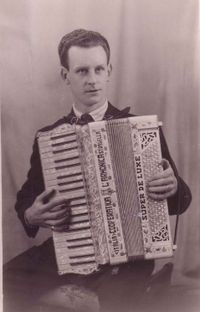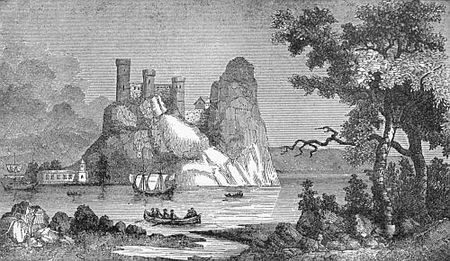Annotation:Rock on the Clyde (The): Difference between revisions
m (Text replacement - "Century Gothic" to "sans-serif") |
Alan Snyder (talk | contribs) m (improve citation) |
||
| Line 10: | Line 10: | ||
<div style="text-align: justify; direction: ltr; margin-bottom: 90px; margin-left: 70px; margin-right: 120px;"> | <div style="text-align: justify; direction: ltr; margin-bottom: 90px; margin-left: 70px; margin-right: 120px;"> | ||
<br> | <br> | ||
'''ROCK ON THE CLYDE, THE.''' AKA and see "[[Brid Harper's (3)]]." Scottish, Irish; Jig (6/8 time). G Major. Standard tuning (fiddle). AABB. [[File:bobbymacleod.jpg|200px|thumb|right|Bobby MacLeod]]The jig was composed c. 1950's by Scottish accordion player and bandleader Bobby MacLeod ( | '''ROCK ON THE CLYDE, THE.''' AKA and see "[[Brid Harper's (3)]]." Scottish, Irish; Jig (6/8 time). G Major. Standard tuning (fiddle). AABB. [[File:bobbymacleod.jpg|200px|thumb|right|Bobby MacLeod]]The jig was composed c. 1950's by Scottish accordion player and bandleader Bobby MacLeod (1925–1991), and was popularized in Irish repertory by the playing of Belfast fiddler Sean Maguire. | ||
<br> | <br> | ||
<br> | <br> | ||
| Line 26: | Line 26: | ||
</font></p> | </font></p> | ||
<p><font face="sans-serif" size="2"> | <p><font face="sans-serif" size="2"> | ||
<font color=red>''Printed sources''</font> : - MacLeod ('''Bobby | <font color=red>''Printed sources''</font> : - | ||
MacLeod ('''Bobby MacLeod's Selection of Country Dance Tunes'''), c. 1955; p. 11. | |||
McGuire & Keegan ('''Irish Tunes by the 100, vol. 1'''), 1975; No. 18, p. 5. | |||
<br> | <br> | ||
<br> | <br> | ||
Latest revision as of 03:40, 16 November 2021
X: 1 % T:Rock On The Clyde, The T:Brid Harper's [3] R:jig C:Bobby McLeod (1925-1991), Mull, Scotland Z:id:hn-jig-456 M:6/8 L:1/8 K:Em GEF G2A | B2e dB/c/d | edB AGA | BGE AFD | GEF G2A | B2e dBd | edB AGA | BGE E2F :| |: ~g3 fed | ~e3 dBA | ~G3 AGA | BGE EGE | DB,D GAc | BdB g2d | edB AGA | BGE E2F :|

The town of Dumbarton was known to the ancient Britons as Alcluith, the ‘rock on the Clyde’, and to the Scots in Dalriada, who spoke Gaelic, as Dun Breatann - 'the fort of the Britons'. It takes its name from a rocky outcrop on the Clyde that was once a fortress of the Britons of Strathclyde. The rock sits at the end of the River Leven which flows from Loch Lomond.

